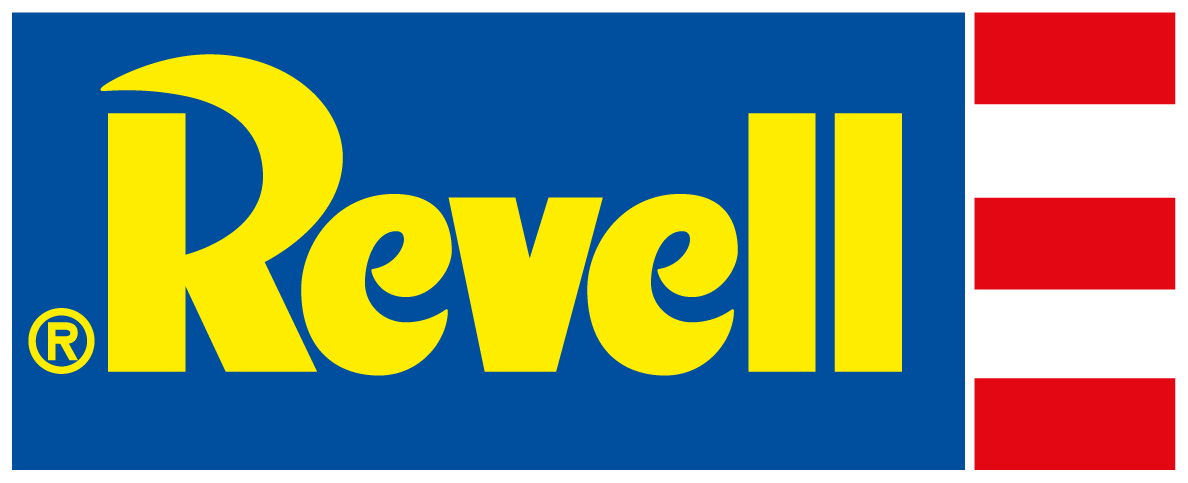Hallo und herzlich willkommen zu unserem ersten Blogbeitrag über die Gloster Meteor im Maßstab 1:32. Wir hoffen, Euch in einer Reihe von Beiträgen über alle Neuigkeiten hier bei Revell auf dem Laufenden zu halten.
Zunächst möchte ich mich vorstellen:
Ich bin Luke Slaney-Hewitt, der neue Produktmanager hier bei Revell. Ich bin hauptsächlich für Flugzeugbausätze verantwortlich, werde aber auch Weltraumthemen abdecken (echte, keine Science-Fiction!). Ich baue schon seit meiner Kindheit Modelle, und eines der Modelle, an das ich mich am besten erinnere, ist tatsächlich die Revell-Version der FROG Gannet. Ich schätze mich unglaublich glücklich, für Revell zu arbeiten, eine Marke, die so vielen am Herzen liegt. Ich freue mich darauf, einige von Euch in den kommenden Monaten und Jahren auf Messen zu treffen!
Das Projekt Gloster Meteor
Lasst uns das offensichtlichste und heikelste Thema direkt ansprechen! 2022 kündigten wir an, dass wir eine großformatige Meteor produzieren würden, wobei wir uns ursprünglich für die F.3 als erste Version entschieden. Leider kam die Entwicklung des Bausatzes kurz nach der Ankündigung ins Stocken und ist eine Weile nicht vorangekommen, während das Team an der Lösung einiger Probleme gearbeitet hat.
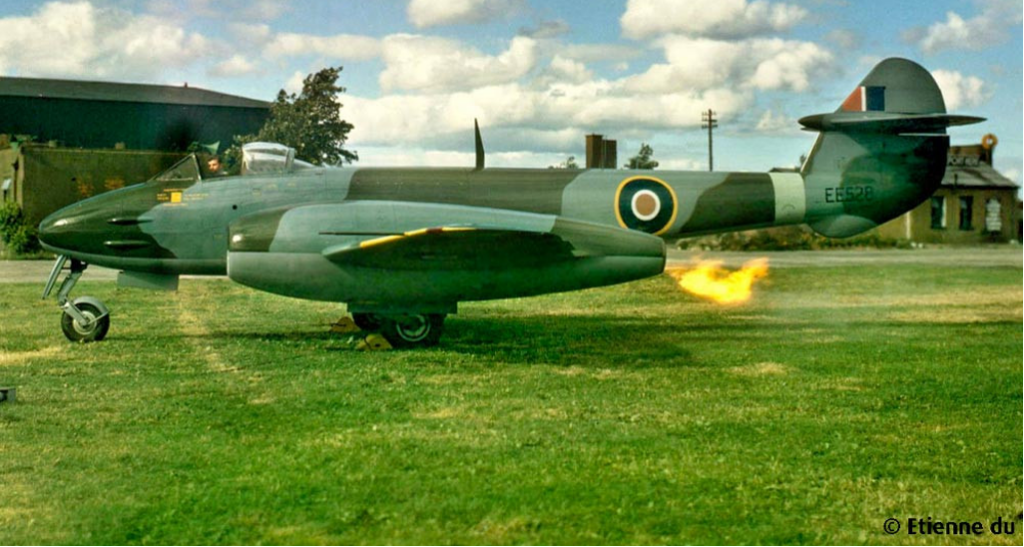
Es wurde uns klar, dass der Markt eigentlich eine andere Version wollte, die F.8 schien die bevorzugte Option zu sein. Wir haben zugehört und können bestätigen, dass die 1:32 Gloster Meteor tatsächlich als Gloster Meteor F.8/FR.9 erscheinen wird.
Auf Gloster Meteor Forschung- und Vermessungsreise
Neben der Änderung der zu veröffentlichenden Version haben wir fleißig geforscht und 3D-Scans durchgeführt, um den Ball so schnell wie möglich ins Rollen zu bringen. Vor einigen Monaten haben wir uns dann auf Reise begeben und mehrere Museen besucht, um verschiedene Flugzeuge zu scannen. Die 3D-Scans werden von unserem Designteam als Vorlage verwendet und stellen sicher, dass wir die Formen des Flugzeugs genau erfassen.
Erste Station unserer 3D-Scanning-Tour war das fantastische Newark Air Museum, wo wir die Gloster Meteor FR.9 VZ608 vermessen und festgehalten haben. Bevor die Kommentare eintreffen: Wir sind uns bewusst, dass dieses Flugzeug nicht repräsentativ für eine Standard-FR.9 ist, und wir verwenden diesen Scan nur als Grundlage für die Kameranase, die bei dieser Variante der Meteor angebracht ist. Ein Teilscan des Flugzeugs wurde erfasst, aber andere für uns nützliche Elemente sind die Landeklappen und der Zusatztank an der Backbordseite. Während des Scannens haben wir das Flugzeug auch fotografiert, um sicherzustellen, dass keine Niete unbeachtet blieb!
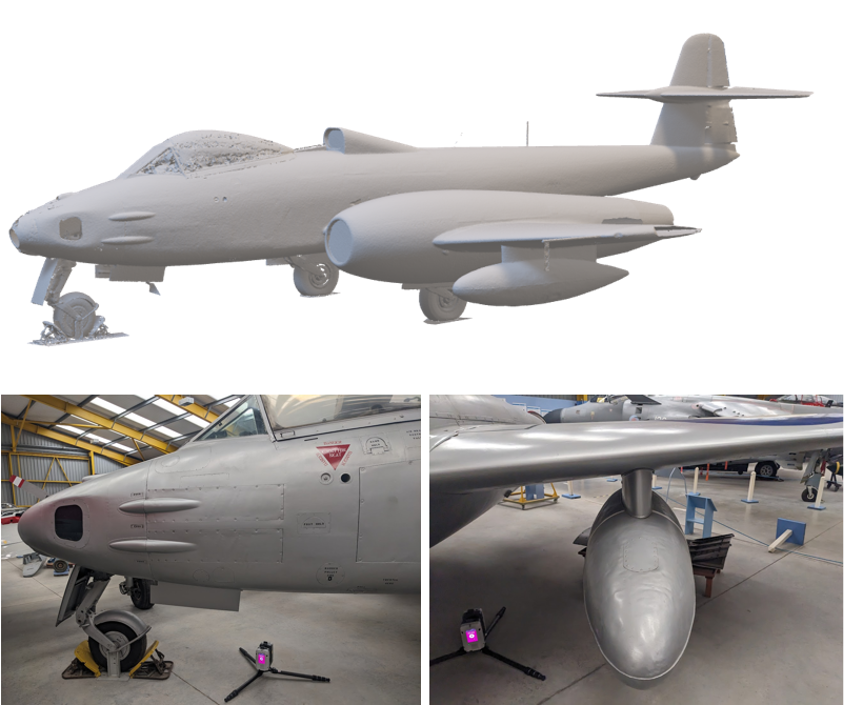
Abbildung 1: VZ608 im Newark Air Museum. Der 3D-Scan (oben) liefert unserem Designer wertvolle Formdaten für den recht unterschiedlichen Nasenkegel der FR.9. Die unteren Bilder zeigen die laufenden 3D-Scans mit Fokus auf die Nase und die Unterflügel-Treibstofftanks.
Am selben Tag wie unser Besuch in Newark fuhren wir zum RAF Museum, um ein einzigartiges Flugzeug zu scannen, die F.8 Prone Meteor! Sorry, wenn wir Eure Vorfreude gleich etwas Einbremsen müssen: Wir planen nicht, eine Prone-Meteor-Version des Bausatzes herauszubringen, so sehr einige das auch wünschen. Als wir ankamen, lag das Flugzeug in Teilen im Michael Beetham Conservation Centre, bevor es in ein anderes Museum verlegt werden sollte. Ihr fragt Euch vielleicht, warum wir ein weiteres „nicht standardmäßiges“ Flugzeug scannen – ist das nicht ein sicherer Weg, um Fehler einzuschleichen? und es macht Sinn, das zu hinterfragen! Tatsächlich haben wir dieses Flugzeug verwendet, weil es die „frühe Version“ der Kanzel, „frühe“ Querruder und auch die breiteren Lufteinlässe hat, die die anderen gescannten Flugzeuge nicht hatten.

Abbildung 2: Die verschiedenen Bauteil-Scans, die wir während unseres Besuchs im RAF Museum gewonnen haben. Oben zu sehen sind die ‚frühen‘ Querruder (links), die Einlässe mit großer Öffnung (Mitte) und die frühe Version der Cockpithaube (rechts).
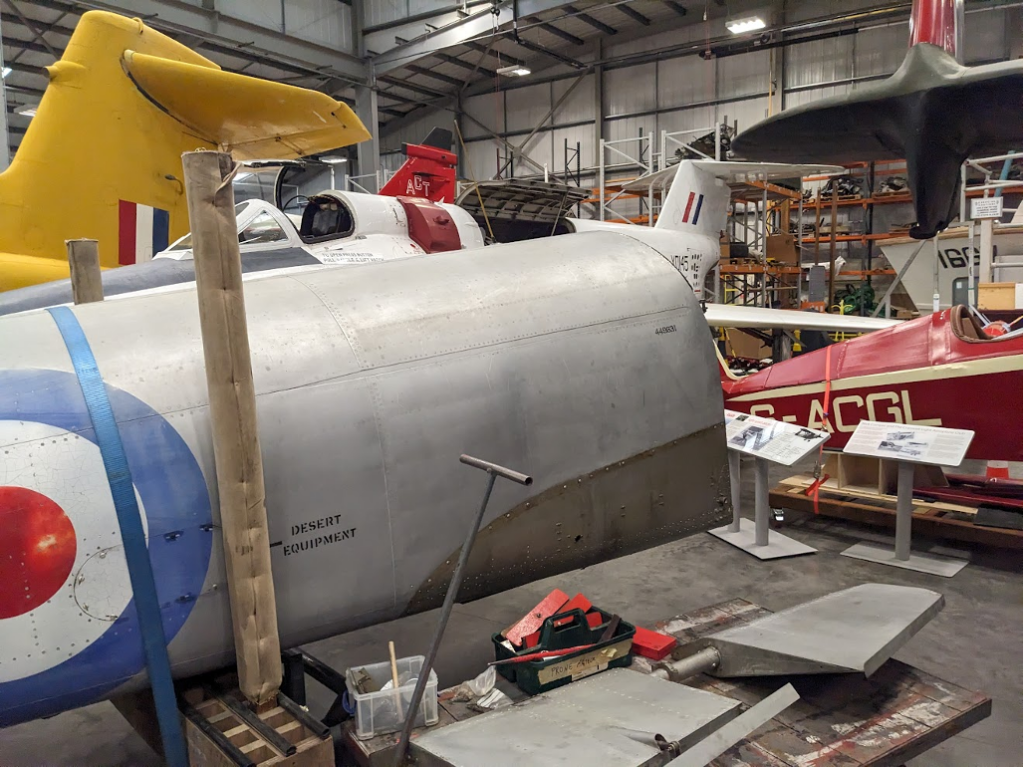
Figure 3: The team was battling with a very tight space to work in; the hangar was filled with all sorts of interesting aircraft types. How many can you spot in this image?
Das in Sektionen zerlegte Flugzeug gab dem Team einen hervorragenden Einblick darin, wie das Flugzeug aufgebaut ist – etwas, das wir im endgültigen Bausatz, an den Stellen, wo es möglich ist, nachbilden möchten. Der zentrale Flügelabschnitt bot uns sogar die Gelegenheit, Bereiche zu betrachten, die normalerweise verborgen sind, wie die Triebwerke, den Treibstofftank und die freiliegenden Vorderkanten.
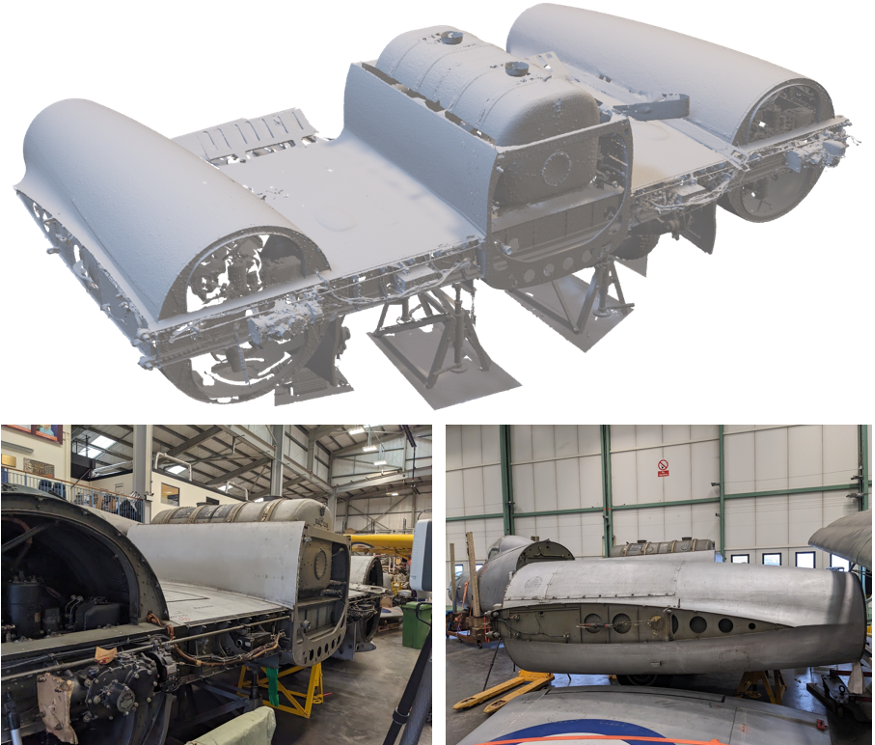
Abbildung 4: Eine großartige Ansicht des zentralen Flügel-/Rumpfabschnitts, die man selten zu sehen bekommt. Wir hoffen, so viele dieser Details wie möglich ins fertige Modell einfließen lassen zu können.
Schließlich besuchten wir auf unserer landesweiten 3D-Scanning-Tour das großartige Jet Age Museum, ein Muss für alle Fans früher Düsenflugzeuge! Unser Modell für dieses etwas andere Fotoshooting war WH364, diese F.8 wird tatsächlich die Grundlage für das Design bilden, wobei die anderen besuchten Flugzeuge verschiedene Elemente beisteuern. Während unseres Besuchs konnten wir auch einen Derwent-Motor scannen. Wir planen, Motoren als Teil des Bausatzes einzuschließen, die entweder im Flugzeug mit entfernten Verkleidungen oder auf einem Ständer präsentiert werden können.
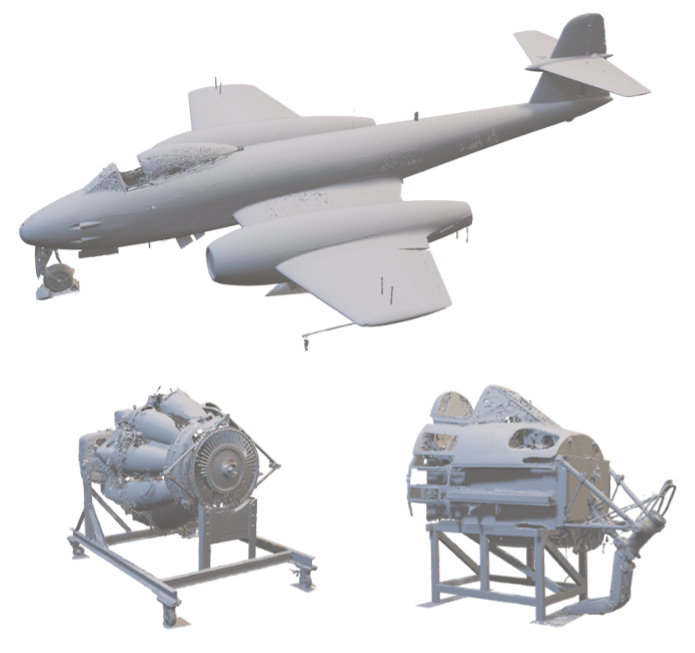
Abbildung 5: Der Hauptscan, der vom Designer zusammen mit dem Motorscan verwendet wird. Zusätzlich haben wir das Cockpit einer Meteor F.3 gescannt, als Reminiszenz an die Ursprünge dieses Projekts.
Es tut uns leid für diejenigen von Euch, die sich wirklich auf die F.3 gefreut haben, und wir hoffen, dass Ihr Euch trotzdem genauso für die F.8 begeistern werdet.
Ich hoffe, Ihr dieses doch recht umfangreiche Update zum Projekt hat Euch gefallen. Wir planen, dies für weitere neue Projekte zu machen, also lasst uns bitte wissen, was Euch interessiert.
Weitere Informationen zur Entwicklung des Bausatzes, insbesondere zu den Flugzeugmarkierungen, werden zu gegebener Zeit folgen. Wenn Ihr Wissen über die Meteor weitergeben oder auf häufige Fallstricke hinweisen möchtet, schreibt bitte eine E-Mail an info.de@carrera-revell.com mit dem Betreff „Gloster Meteor Update“.
Ich werde mich bemühen, alle zu lesen und wenn möglich zu beantworten!
Best,
Luke
